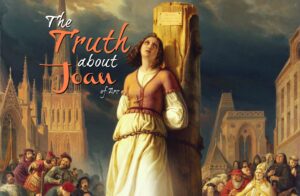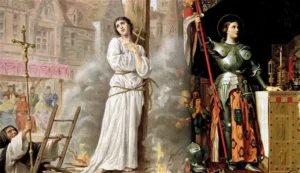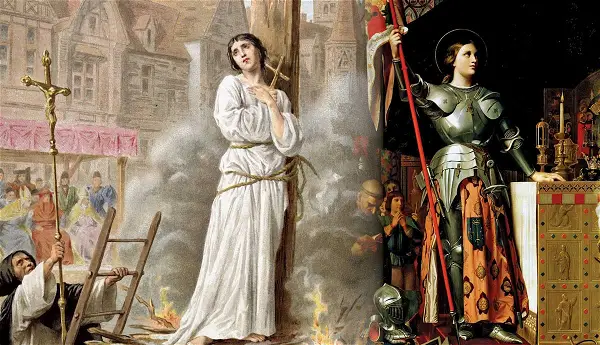
Joan of Arc, a name synonymous with bravery and patriotism, is one of history’s most intriguing figures. Her story has been told through countless books, movies, and plays, but the true essence of her trials and triumphs remains a subject of fascination and debate. This article delves into the real story behind Joan of Arc, examining her impact on French history and the controversies surrounding her life and legacy.
The Early Life of Joan of Arc
Joan of Arc was born around 1412 in Domrémy, a small village in northeastern France. Raised in a humble peasant family, Joan’s early life was marked by the turbulence of the Hundred Years’ War between France and England. Despite her modest beginnings, Joan claimed to have received divine visions instructing her to support Charles VII, the Dauphin of France, and help him reclaim his kingdom from English occupation.
The Divine Mission
At just 17 years old, Joan left her village and traveled to meet Charles VII. Her arrival was met with skepticism, but her unwavering conviction and detailed knowledge of the court convinced Charles to give her a chance. Joan’s belief that she was guided by divine voices became the cornerstone of her mission. She was given a standard and sent to lift the siege of Orléans, a pivotal battle in the war.
The Siege of Orléans
The siege of Orléans in 1429 was a turning point in the Hundred Years’ War. Joan’s presence inspired the French troops, and her strategic advice played a crucial role in lifting the siege. This victory was not only a military success but also a significant morale booster for the French. It validated Joan’s claims of divine guidance and increased her influence in the French court.
The Coronation of Charles VII
Following the victory at Orléans, Joan’s mission continued as she escorted Charles VII to Reims, where he was crowned King of France on July 17, 1429. This event was a symbolic triumph for Joan and her cause. The coronation solidified Charles’s claim to the throne and marked a turning point in the war against England. Joan’s role in this achievement was crucial, but her journey was far from over.
The Trials and Capture
Joan’s fortunes changed dramatically after the coronation. She continued to support Charles VII, but her fortunes declined with the shifting tides of war. In May 1430, Joan was captured by Burgundian forces during a military campaign. The Burgundians, allies of the English, handed Joan over to the English, who were eager to discredit her and undermine Charles VII’s legitimacy.
The Trial and Execution
Joan of Arc was put on trial by the English Church court in Rouen. The charges against her were politically motivated and included heresy, witchcraft, and cross-dressing. The trial was a spectacle of political maneuvering, with Joan ultimately being found guilty. On May 30, 1431, she was burned at the stake in Rouen at the age of 19. Her death was a grim end to a life marked by remarkable courage and determination.
The Posthumous Rehabilitation
Joan of Arc’s legacy was far from over after her death. In 1456, a posthumous retrial was conducted by the Catholic Church, which overturned the earlier verdict. Joan was declared a martyr and a saint in 1920. Her canonization was a testament to her enduring impact on French history and culture. Joan of Arc’s story became a symbol of resistance, faith, and national pride.
The Legacy of Joan of Arc
Joan of Arc remains an iconic figure in history. Her life and trials highlight the intersection of faith, politics, and warfare. She is remembered not only for her military achievements but also for her unwavering faith and determination. Joan’s legacy continues to inspire and provoke discussion, making her a timeless figure in both French history and global culture.
Conclusion
Joan of Arc’s story is a rich tapestry of courage, conviction, and controversy. Her trials and triumphs reveal the complexities of her time and the enduring power of her legacy. As we reflect on her life, we gain insight into the tumultuous era of the Hundred Years’ War and the profound impact one individual can have on the course of history.


















